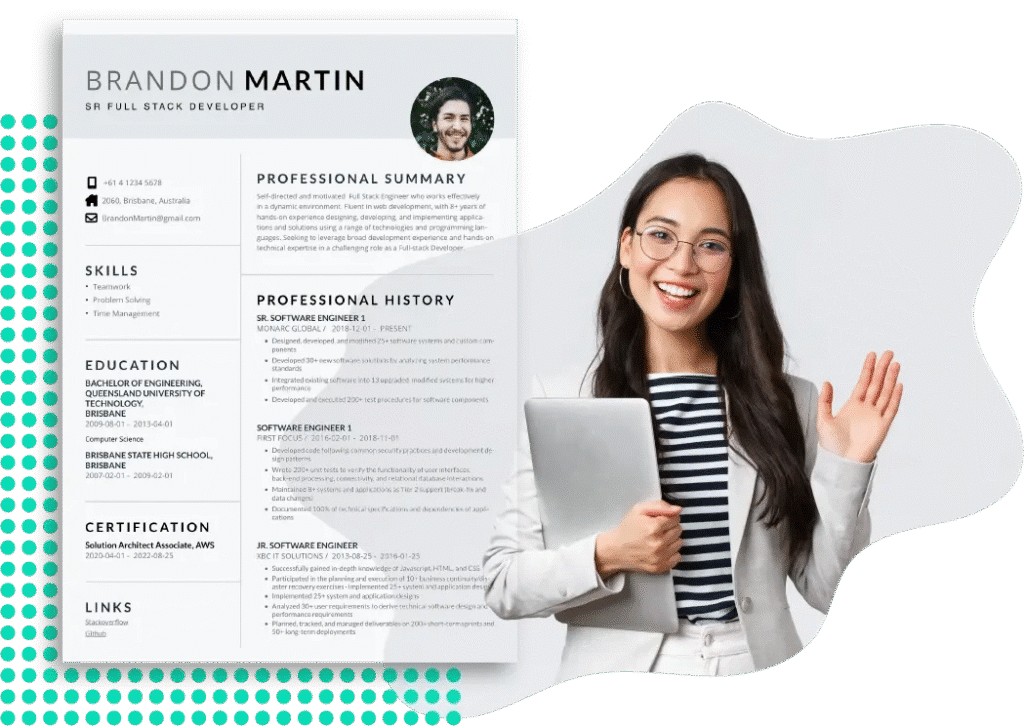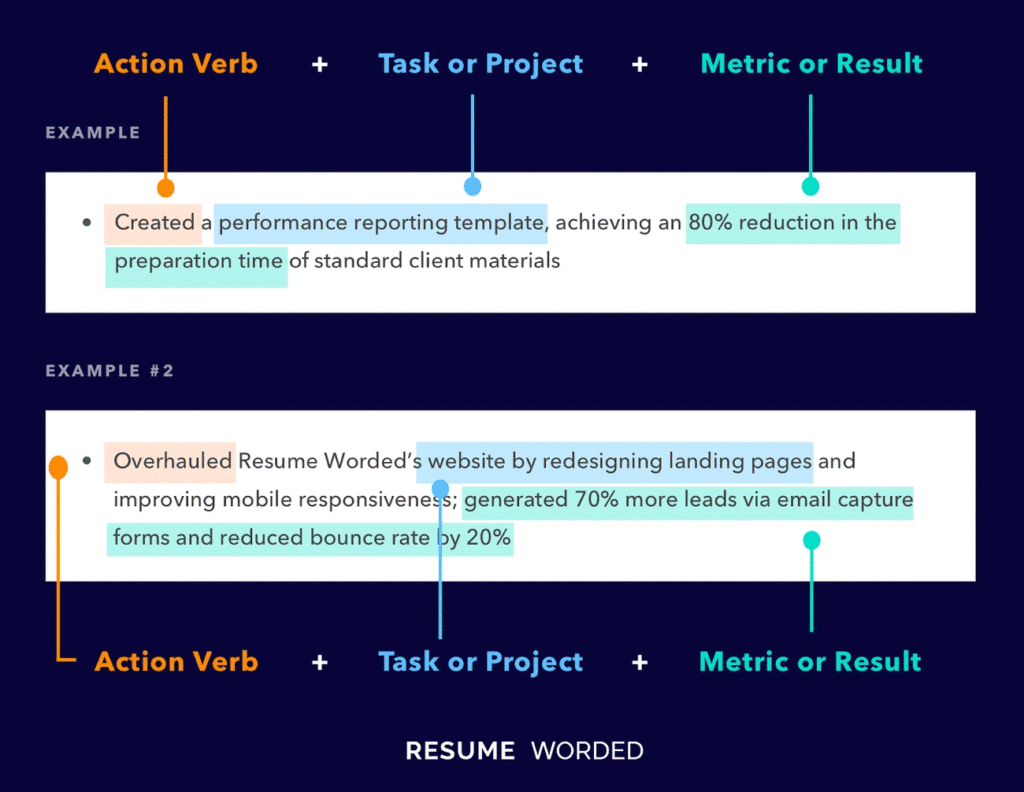How to Write a Strong Resume That Actually Gets Past ATS in 2025
A strong resume that gets noticed plays a significant role in today’s competitive job market. Employers might receive hundreds of resumes for a single position with limited time to review them. Your resume won’t guarantee a job or internship by itself, but it’s a vital step to get an interview.
This complete guide will show you how to create a resume that truly stands out. The content covers everything from format selection to showcasing your most relevant skills and experiences. You’ll learn about the key differences between chronological and functional resumes, and ways to customize your content for both private sector and federal positions.
Employers look for specific skills that your resume needs to highlight clearly. We’ll help you build a document that effectively presents your qualifications. This guide provides practical steps to help your application succeed – whether you’re writing your first resume or updating an existing one to meet 2025 standards. The goal is to get your resume past Applicant Tracking Systems (ATS) and into human hands.
Start with the Basics: Resume Format and Layout
Your resume needs a solid foundation before you start creating content. The right format and layout will help you clear initial screening hurdles. Your choice of structure will showcase your qualifications to potential employers.
Chronological vs functional vs hybrid formats
The professional world has three main resume formats. Each format suits different career situations:
The chronological resume format shows your work history in reverse order and starts with your current position. Hiring managers prefer this traditional approach because it shows your career growth and timeline clearly. This format works best if you have worked steadily in the same field as your target job.
Functional resumes highlight your skills and qualifications instead of your work history. You’ll start with a detailed overview of your professional skills and add a brief work history section later. This format helps career changers and people with employment gaps. It also works well if your work history doesn’t match your target position.
The hybrid resume combines both approaches. It starts with a strong skills section and follows with chronological work history. This balanced style meets ATS requirements and human priorities. It paints a complete picture of your professional profile. Research shows hybrid resumes became more popular in 2025. They showcase both valuable skills and relevant experience effectively.

Font, spacing, and file type best practices
Simple designs work best for resumes. Here’s what you need to know:
Fonts: Use professional, ATS-friendly options like Arial, Calibri, Times New Roman, Helvetica, or Georgia. Body content should be 10-12pt, section headers 14-16pt, and your name 28-35pt.
Spacing and formatting: Keep 1-inch margins throughout your document. Use normal line spacing (1.0). Skip text boxes, columns, headers, or images – they confuse ATS systems.
File types: Save your resume as a Word document (.doc/.docx) or PDF. These formats keep your formatting intact and work well with ATS systems. Always check if the job posting asks for a specific file format.
How to make a resume easy to scan
Recruiters take just 7.4 seconds to review a resume on first look. You need to make your document scannable:
- Use clear section headings with standard labels like “Work Experience,” “Education,” and “Skills”. ATS systems recognize these common terms.
- Create white space balance through short paragraphs and smart spacing between sections. This makes key information stand out without overwhelming the reader.
- Format dates consistently in your document. Pick either “Month/Year” or “MM/YYYY”. This helps ATS systems and recruiters track your timeline.
- Apply strategic emphasis by making job titles or key achievements bold. Skip italics or underlining as they can cause ATS issues.
These format and layout basics will help your resume pass automated screens and grab human attention. A good resume builder will make this job easier as well as communicate your qualifications clearly to both machines and people.
Tailor Your Resume for Each Job
The same resume sent to different jobs rarely works in today’s market. You won’t get many interviews by sending identical documents to multiple openings. Your chances of success will soar when you create tailored resumes for each position. Here’s how you can make your application match what employers want.
Reading and analyzing job descriptions
Job descriptions give you a perfect blueprint to customize your resume. Take time to read the entire posting several times to understand its flow and tone. Don’t take notes during your first few reads – just let the information sink in and see how everything connects.
The next step is to break down the description more carefully:
- Get into qualifications, required skills, and specific tools or platforms mentioned
- Look for repeated words or phrases since they usually show what’s important
- Focus on what’s listed under “requirements” versus “preferred qualifications”
- Look for both technical skills and people skills they want
A full picture of the job description helps you learn about how your skills match their needs, find the right keywords, and understand their company culture.
Customizing your resume for keywords
The right keywords need strategic placement throughout your resume. ATS systems judge your qualifications in part by keyword frequency. You should use important terms 2-3 times in your document.
The location of keywords matters substantially. ATS systems track skill experience differently based on where words appear:
- Skills in job descriptions can get credit for your whole time there
- Skills only in a dedicated section might get a few months’ credit
Your interview chances jump 10.6 times higher when you use the exact job title on your resume. This happens because 55.3% of recruiters search their ATS database specifically by job title.
Arranging your experience with job requirements
After spotting key requirements, connect them directly to your experience. Show what you achieved instead of just listing duties. Put real numbers to your accomplishments – use percentages, dollar amounts, or time saved.
The order of responsibilities in the job posting often shows what matters most to employers. Arrange your resume sections to match this priority.
Your summary section sits at the top and makes your first impression count. Use it to showcase relevant skills based on your highlighted keywords. Include the exact job title to show you’ve personalized your application.
It’s worth mentioning that while ATS optimization matters, humans who spend just 6-8 seconds scanning each document must like what they see. Strike a balance between keywords and readable content that shows your real qualifications.

Write Strong, Quantifiable Bullet Points
Your resume’s strength lies in its bullet points. A well-crafted set of bullets can turn a basic resume into a powerful document that proves your worth to employers. Let’s look at how you can create impactful statements that highlight your achievements.
Using numbers to show impact
The best resumes measure achievements with hard data. Numbers give solid proof of what you’ve done and show hiring managers exactly what you bring to the table. You should turn your accomplishments into measurable results through:
- Percentages (increased efficiency by 25%)
- Dollar amounts (generated $17,000 in sales)
- Time saved (reduced preparation time by 80%)
- Volume metrics (managed a team of 10 employees)
Jobs that don’t seem number-friendly can still use this method. You can work with ranges or estimates if exact numbers aren’t there. A social-first approach works here. Rather than saying “supervised undergraduate researchers,” write “supervised 7-12 undergraduate research students each year”.
This measurement approach works in any discipline. Sales teams can highlight their revenue growth or new client numbers. Healthcare professionals might focus on patient satisfaction scores or shorter wait times. Administrative staff can track processed documents, response times, or workflow improvements.
Examples of strong vs weak bullet points
These examples show the difference between weak and powerful statements:
Weak: Responsible for improving efficiency across teams.
Strong: Spearheaded automation project affecting 35 team members and improved overall department efficiency from 65% to 89%.
Weak: Answered client calls.
Strong: Resolved client issues through phone support, achieving a 98% client satisfaction rate.
Weak: Created marketing materials and publicized events.
Strong: Created marketing materials and publicized events through social media, increasing attendance at club programs by 75%.
Strong bullets work because they start with action verbs instead of passive phrases like “responsible for”. They highlight achievements rather than daily tasks. They also include specific metrics that show real results.
Numbers on resumes stand out better as numerals rather than words—”10″ instead of “ten.” This makes them pop visually and saves space. You should also add context to your achievements by showing before-and-after results of your work.
A simple formula makes this work: action verb + specific achievement + measured result. This approach creates bullet points that show your value to employers right away and boosts your chances of getting that interview call.
Include All Relevant Experience and Skills
A competitive resume needs more than a list of your previous jobs. You must showcase your best achievements and qualifications that make you stand out from other candidates.
Highlighting achievements over duties
Your work experience section should show what you accomplished rather than list daily tasks. Many job seekers just write their duties, but this approach doesn’t separate you from others in similar roles. Your actual value shines through measurable achievements. Each position should have 2-4 bullet points that show specific accomplishments with quantifiable results. Numbers and percentages help describe what you achieved at your internship or job.
How to include internships and volunteer work
Your internships deserve prime placement on your resume if you have limited work experience. You should format internships like professional experience with organization name, location, dates, and title. Use specific titles like “Marketing Intern” or “Social Media Marketing Intern” instead of just “Intern”. Relevant volunteer work can show valuable skills, fill employment gaps, and prove community involvement. You can put volunteer experiences in your professional experience section if they match your target role. Another option is to create a dedicated “Volunteer Experience” section for transferable skills.
Listing technical and soft skills effectively
Your skills section should split between technical skills (hard skills needed for job performance) and soft skills (interpersonal abilities). Technical skills come first for technical roles. Your skills should appear throughout your resume:
- Add 10-30 relevant skills in a dedicated section, with most being technical skills that relate to the role
- Show soft skills through accomplishments instead of listing them
- Weave skills into your work experience by showing how they led to results
When to include certifications and awards
Certifications prove your professional skills and dedication to your field. They belong on your resume when required, show industry experience, or display relevant skills. List each certification’s full name, issuing organization, date earned, and expiration date if needed. Awards that show excellence in your field can boost your resume substantially, especially those that prove soft skills like teamwork or leadership.
Final Checks Before You Submit
Quality control makes the difference between a good resume and a great one. Your dream job might slip away because of small mistakes. Here’s how to make sure your resume stands out.
Proofreading and grammar review
You can’t skip careful proofreading. Spelling mistakes and poor grammar could ruin your chances right from the start. Find a quiet spot and spend at least an hour to edit your resume properly. Reading it out loud helps you spot problems you might miss when reading silently. Your verb tenses should match too – past jobs need past tense, and your current role needs present tense.
Using resume checkers and ATS simulators
ATS systems are the first hurdle your resume needs to clear. Tools like Jobscan help you match your resume against job descriptions and check for format issues, keywords, and best practices. The ATS Resume Checker from Kickresume runs more than 20 different tests and gives you a score – aim for 80 or higher. These tools show you hidden problems that could stop your resume from reaching real people.
Getting feedback from mentors or advisors
Technology helps, but human feedback is a great way to get real insights. Tell people exactly what parts of your resume you want them to look at. Career coaches give you the full picture of both what you say and how you present it. Try asking different people to focus on specific things – one person checks grammar, another reviews industry content, and someone else looks at the overall effect.
Conclusion
A standout resume demands careful attention to detail and smart customization. This piece explores everything you need to create a resume in minutes that will successfully direct through both automated systems and human reviewers in 2025.
Your resume is your professional introduction. Time spent on its development will yield substantial returns during your job search. The format plays a big role – your choice between chronological, functional, or hybrid approaches should line up with your career situation. Clean formatting with proper fonts, spacing, and file types will give a clear presentation of your qualifications to ATS systems.
Customization is a vital part of modern resume writing. Don’t send similar documents to multiple openings. Take time to analyze each job description carefully. This analysis helps you add relevant keywords and match your experience with specific requirements. Your chances of clearing the original screening stages will improve dramatically.
Numbers tell a better story than generic duty listings. They provide solid evidence of your contributions and help employers see your potential value. Your accomplishments should include measurable terms with percentages, dollar amounts, or other specific metrics whenever possible.
Thorough proofreading and feedback are essential before submission. Small errors can derail an otherwise excellent application. ATS simulators are a great way to get insights. Human feedback adds nuanced points of view that software alone cannot provide.
By doing this, you’ll create a resume that clears automated screening systems and appeals to hiring managers. The process takes work, but landing interviews for your dream positions makes it worth the effort. These strategies will help your carefully crafted resume open doors to new professional opportunities.
FAQs
Q1. What is the most effective resume format for passing ATS in 2025? The reverse chronological format is generally considered the most ATS-friendly. It lists your work experience in reverse order, starting with your most recent position, which clearly showcases your career progression and is easily parsed by most ATS systems.
Q2. How can I tailor my resume to increase its chances of passing ATS? Analyze the job description carefully, identify relevant keywords, and strategically incorporate them throughout your resume. Customize your content to align with specific job requirements, and use a clean, simple format with clear section headings.
Q3. What’s the importance of quantifying achievements on a resume? Quantifying achievements provides concrete evidence of your contributions and helps employers visualize your potential value. Use numbers, percentages, or other specific metrics to demonstrate the impact of your work whenever possible.
Q4. Should I include internships and volunteer work on my resume? Yes, especially if you have limited work experience. Format internships similarly to professional experience, and include relevant volunteer work to showcase valuable skills, bridge employment gaps, and demonstrate community involvement.
Q5. How can I ensure my resume is error-free before submitting? Thoroughly proofread your resume, reading it aloud to catch errors. Use resume checkers and ATS simulators to identify potential issues. Additionally, seek feedback from mentors or advisors for a comprehensive review of both content and formatting.





